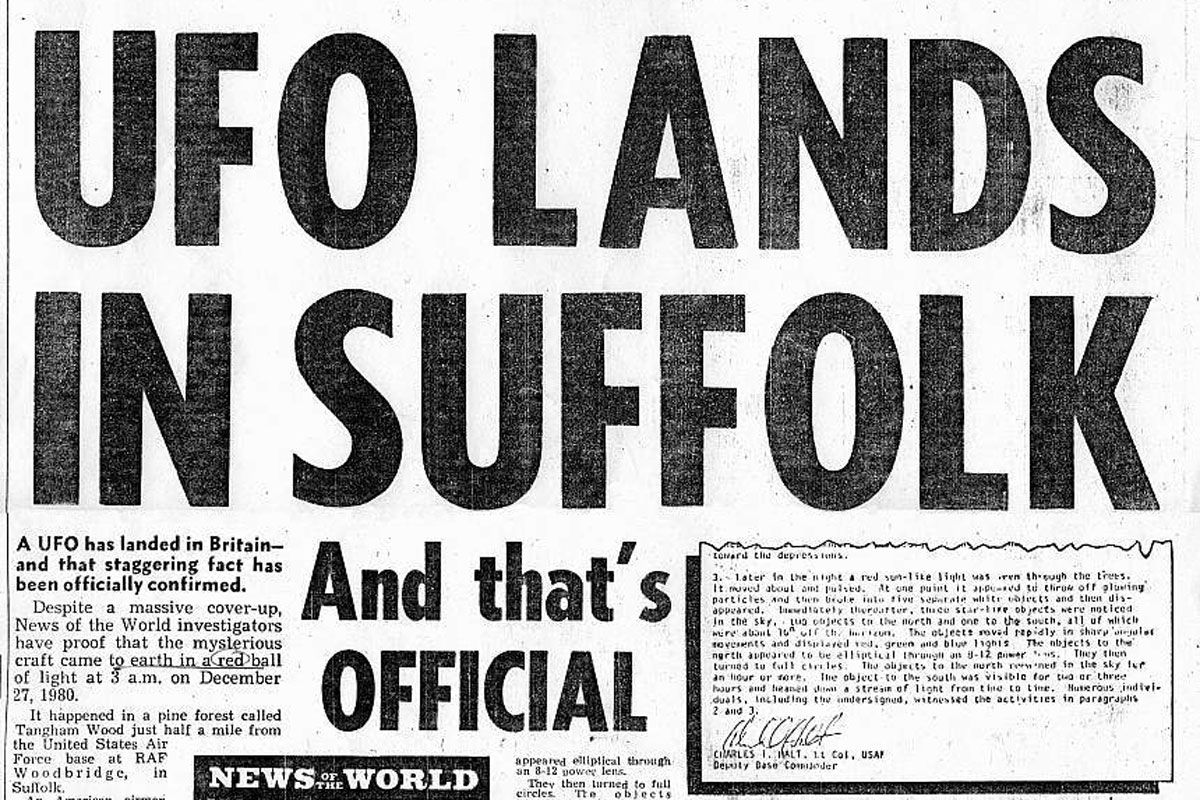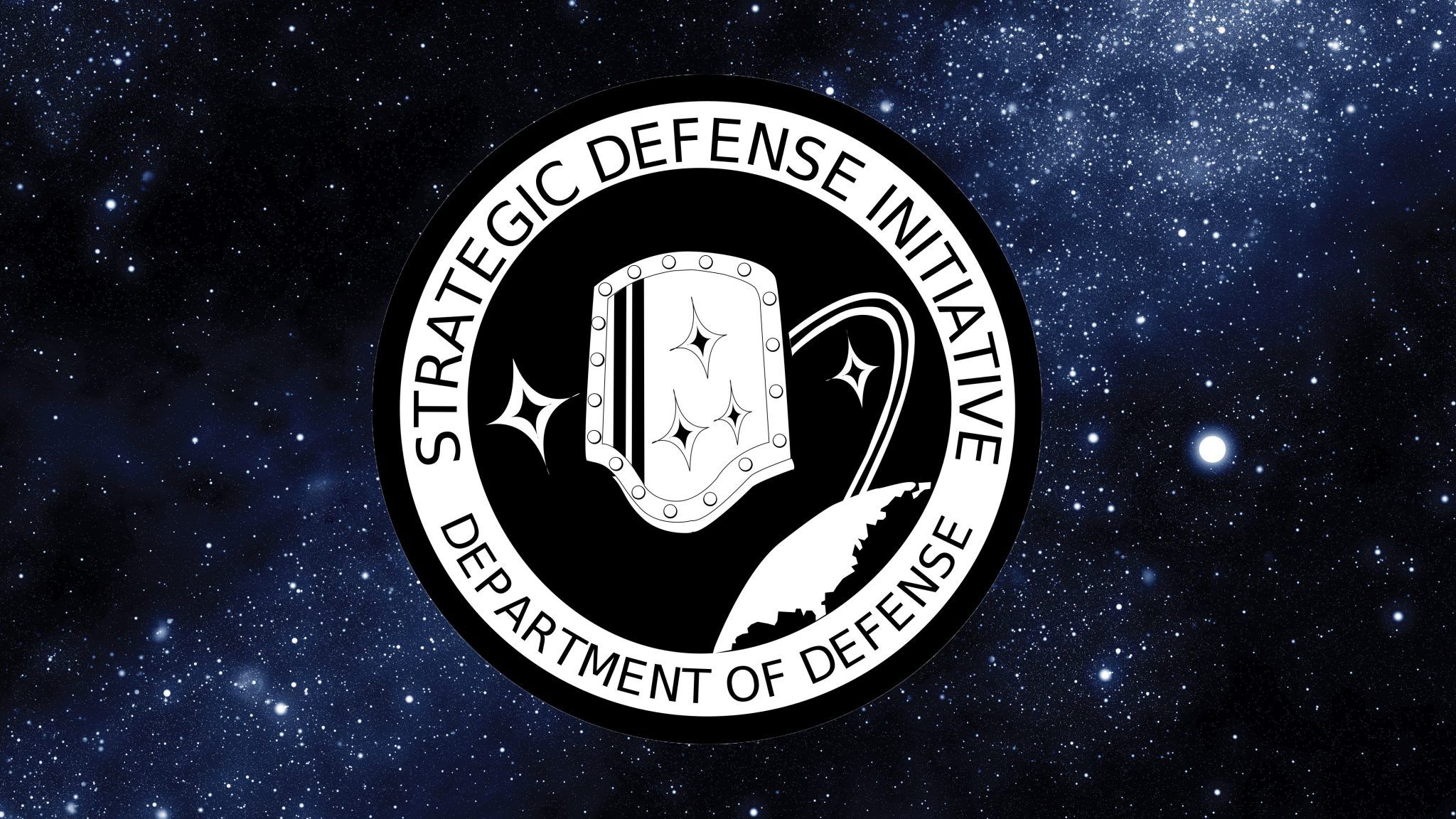Lifting the Lid on Britain’s Most Famous Alien Encounter
Article by Nick Pope December 25, 2020 (thescottishsun.co.uk)
• Forty years ago, in the early hours of December 26, 1980, that three men from the US Air Force security police based at RAF Woodbridge, Suffolk, England saw the strange flashing lights deep in the adjacent Rendlesham Forest. They figured that an aircraft might have crashed, so they drove out to investigate and help. As the track of road narrowed, they were forced to continue on foot. Two of the men, John Burroughs and Jim Penniston, advanced into a small clearing, brightly lit by the strange lights. As they got closer, they realized it was not a crashed aircraft but a landed UFO.
• The object was triangular, ten feet wide at the base, resting on three legs. It looked like a cross between a small stealth fighter and a lunar landing module. And the only way into the clearing was from above. Penniston was trained in aircraft recognition and this was like nothing he had ever seen. Symbols on the side looked like Egyptian hieroglyphs. The photos that Penniston took “did not come out”. But his drawings of the craft and his accompanying notes have survived (see below). The craft took off vertically and he noted: “Speed — impossible.”
• Two nights later on December 28, 1980, the UFO returned. The witnesses on this night included the deputy base commander, Lieutenant Colonel Charles Halt who led a team into the forest to investigate. Halt recorded his observations on a cassette tape. On tape, Halt is heard remarking about the UFO ahead: “It’s definitely coming this way . . . pieces of it are shooting off . . . this is weird.” The UFO appeared overhead and fired a thin beam of light in front of them. Halt later asked himself: “Was this a weapon, was this a warning, was this communication?” Burroughs and Penniston later reported health issues, which they attributed to the UFO sighting.
• Later it was claimed that the UFO was seen firing light beams into a storage area where nuclear weapons were kept. In 2015, Colonel Halt acquired statements from two military radar operators, Ike Barker and Jim Carey. They confirmed that the UFO was tracked on radar, traveling at thousands of miles an hour then stopping over the base. “It wasn’t like any radar target I have seen,” Barker said. (see previous ExoArticle on the radar operator’s story) Radioactivity at the site was also said to be “significantly higher than the average background”. Halt concluded that the craft was clearly under intelligent control.
• British and American defense chiefs conspired to keep the incident secret. But in 1983, Lord Hill-Norton, formerly Britain’s most senior military officer, asked a series of questions about the Rendlesham Forest incident in Parliament. Hill-Norton stated that either the deputy commander of an operational, nuclear-armed NATO base was hallucinating – or there had been an actual UFO landing.
• In 1997, former Prime Minister Margaret Thatcher was at a charity function with the socialite Georgina Bruni. When Bruni asked Thatcher about UFOs and the Rendlesham Forest incident, Thatcher replied: “You must have the facts, (but) you can’t tell the people.” Bruni believed that Thatcher had been spooked by secret intelligence regarding UFOs.
• In 2006, the MoD declassified a top-secret assessment of the overall UFO phenomenon, code-named ‘Project Condign’. In the final report, it stated that “several observers were probably exposed to UAP radiation for longer than normal UAP-sighting periods”. This information was passed along to the US Department of Veterans Affairs, and a confidential claim settlement was reached with at least one of the US Air Force personnel at Rendlesham.

It was in the early hours of December 26, 1980, that three men from the US Air Force security police

based at RAF Woodbridge, Suffolk, saw the strange flashing lights.
Coming from beyond the perimeter fence, in Rendlesham Forest, they figured an aircraft might have crashed. They drove out to investigate and help.
As the track narrowed, they continued on foot.
They were walking into history.
John Burroughs and Jim Penniston advanced into a small clearing, brightly lit by the strange lights. As they got closer, they realised it was not a crashed aircraft — it was a landed UFO.

The object was triangular, ten feet wide at the base, looked like a cross between a small stealth fighter and a lunar landing module, and was resting on three legs.
The only way into the clearing for a vehicle was from above.
Penniston was trained in aircraft recognition and this was like nothing he had ever seen. Symbols on the side looked like Egyptian hieroglyphs.

He took photos but was later told they did not come out. But he sketched the craft too, and his drawing has survived. He also took notes. The craft took off vertically and he wrote: “Speed — impossible.”
Two nights later the UFO returned and the witnesses then included the deputy base commander, Lieutenant Colonel Charles Halt. A sceptic, he led a team into the forest when he was told the UFO had come back.

NUCLEAR WEAPONS
He recorded his observations on a cassette. It makes eerie listening as Halt catches sight of the UFO and says: “It’s definitely coming this way . . . pieces of it are shooting off . . . this is weird.”
Then the UFO appeared overhead and fired a thin beam of light in front of them.

Shocked Halt later asked himself: “Was this a weapon, was this a warning, was this communication?”
Later the UFO was seen firing light beams into a storage area, where many claim — though this was never confirmed — that nuclear weapons were kept.
In 2015, Colonel Halt, who has pursued the case, acquired statements from two military radar operators, Ike Barker and Jim Carey.
They confirmed the UFO was tracked, travelling at thousands of miles an hour then stopping over the base.

“It wasn’t like any radar target I have seen,” Barker said.
Halt concluded that the craft, “was clearly under intelligent control”.
Radioactivity at the site was said to be, “significantly higher than the average background”.

Defence chiefs conspired to keep the incident secret.
But in 1983 the News of The World printed details.
Then Lord Hill-Norton, formerly Britain’s most senior military officer, asked a series of questions about the incident in Parliament.
He stated that either the deputy commander of an operational, nuclear-armed Nato base was hallucinating — or there had been a UFO landing.
The second establishment figure to break ranks was former Prime Minister Margaret Thatcher. She was at a charity function in 1997 with the socialite Georgina Bruni, who had a long-standing interest in UFOs.
Bruni asked Baroness Thatcher about UFOs and Rendlesham and she replied: “You must have the facts and you can’t tell the people.” Bruni believed Thatcher had been spooked by a secret about UFOs.
FAIR USE NOTICE: This page contains copyrighted material the use of which has not been specifically authorized by the copyright owner. ExoNews.org distributes this material for the purpose of news reporting, educational research, comment and criticism, constituting Fair Use under 17 U.S.C § 107. Please contact the Editor at ExoNews with any copyright issue.



